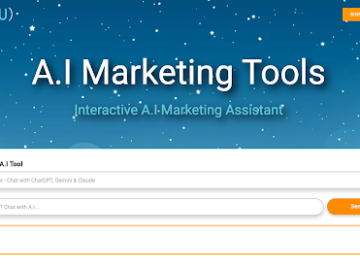Talk to any advertising creative director in the pharma space, and they’ll tell you, it’s no longer about the big idea or whether the perfect headline is paired with the perfect image that gets people to engage. From a marketing perspective, it’s now about creating connected experiences. As a result, the customer experience (CX) is more important than ever to pharma and life science companies engaging with patients, providers and caregivers.
During a recent roundtable discussion sponsored by Swoop, editor-at-large Marc Iskowitz sat down with a distinguished group of marketing executives to discuss how this engagement transformation informs marketing strategy. Participants included Kallie Carter, formerly Senior Director, Oncology Omnichannel Marketing, Eisai; Tanya Hill, VP, Customer Experience, aMallinckrodt Pharma; Devin Kanach, director of product marketing, Swoop; Ryan Krahmer, formerly associate director, commercial strategy and operations, BMS; Eric Redline, ââEVP, Product Strategy, Swoop; Tarak Shah, Senior Director, head of U.S. Customer Engagement, Ferring Pharmaceuticals; and Jared Shechtman, Marketing Technology Solutions, Eisai.
Slow adoption of true omnichannel experiences
Artificial intelligence (AI) has the potential to enhance the commercialization of new products and the engagement with HCPs, pharmacists, payers and patients.
“It’s a journey we’re still trying to figure out,” Shah said. “We’re starting to get some experience while we develop a more holistic plan.”
While the push to use AI comes from the ground up, “at the leadership level, we have an AI advisory group assessing situations to guide us on the right path, to make sure that anything we’re doing going forward is aligned, {and} compliant,” Shechtman noted.
The slow adoption of a true omnichannel experience in the pharma industry partly stems from “the relationship that pharma has with patients and consumers,” Redline said. Unlike a consumer relationship with well-known brands such as Nike, “patients don’t often know who manufactures the drugs they take.” This creates challenges when designing marketing campaigns but also elevates the opportunity to use AI to create a more consumer-like experience.
Evolving data and privacy regulations further complicates engagement. “It’s becoming a lot more difficult to reach and build an appropriate audience to target because you can’t target patients by disease anymore (on Facebook and some other social media platforms),” Shah said.
Integrating AI in marketing
AI can help “in real time by doing that market research for you and helping figure out what’s the best content for a certain type of HCP and patient with a certain type of activity and what channel is the best way to reach those individuals,” Carter said. “Data is the foundation that underpins everything.”
It’s important for companies to look at how AI strategy is integrated within the strategic process. “That can help identify where resources need to shift to frame that infrastructure and where we see the best use of AI,” Hill noted.
The key to incorporating the technology is to “evaluate on a case-by-case basis of what the problem is that you’re trying to solve with AI,” Krahmer advised.
Many brands rely on partners to help them navigate the ever-changing technology and privacy landscape. Vendors can help clients “understand the changes, what it means, the implications from a marketing and an engagement perspective,” Shah said.
The initiatives are a collaborative effort. “We keep data in-house to connect those dots and leverage the data through our tech stack and then let the partners do what they do best,” Shechtman explained.
When selecting external healthcare partners, ensure they are privacy safe and they have a solid understanding of the data privacy landscape which is largely governed at a state by state level. At Swoop, for example, “it is ingrained in our DNA across all of our product lines,” Redline said, and “we have a team of experts tracking what is happening and adjusting our methodologies accordingly.”
According to the Swoop/MM+M Healthcare Marketers Trend Survey, slightly over 72% of pharma marketers lack a dedicated budget for interactive virtual agents (IVAs).
Budget management remains a critical factor in implementing new technologies and strategies. It’s important for vendors to understand a company’s budget planning cycle when proposing new initiatives. “The monthly fee is definitely the preferred model for smaller companies, but I would give larger companies the option to pay annually,” Krahmer explained. “The reason is most companies set their budgets yearly and then they’re required to achieve a near-zero variance by the end of the year. Paying a yearly fee helps them accomplish this goal, and reduces paperwork.”
Integrating AI into various business processes presents both challenges and opportunities. For example, many brands struggle with monitoring these tools and look to external partners for help. Much like with social media, it’s crucial to “write into the contract with a vendor that it routinely checks that the output is as expected or then escalates and reports as needed,” Carter advised. When used in market research, the use of AI has proved effective in “forming segments to better predict which targets to put into what segment up front and help with identifying the customer audiences.”
In addition to content creation and segmentation, AI has the potential to accelerate the medical, legal and regulatory (MLR) review processes, Redline noted.
Improving the consumer experience
Collecting and analyzing the voice of the customer (VOC) remains a vital tool for understanding customer needs and improving their experience. “It provides meaningful customer insights to help inform the CX,” Shah noted.
Website analytics, traditionally used to track customer interactions, are evolving with the help of AI. “Every content tag is helping tell more of that story, what they are engaging with,” Shechtman said.
In addition, AI can help companies “look holistically at who’s doing surveys when and if it feeds back into another team in terms of something that they’re working on,” Hill said. Redline agreed that “AI helps break down the firewall because it’s agnostic.”
Unlike quarterly or yearly market research studies, chatbots and virtual agents are a critical component of CX. “They offer valuable real-time data that can inform broader marketing strategies by quickly identifying what information the patient or HCP needs when they go to that specific website and what information is missing,” Krahmer said. “Brands can rapidly respond to these requests in real time.”
IVAs can also help personalize customer interactions. For example, “when a patient clicks about a certain topic they could go to the agent saying, ‘I noticed you clicked on this topic,’ and make it more of a seamless conversation and instill a back and forth as a patient and agent,” Kanach said.
The rise of telehealth during the pandemic has strengthened the case for IVAs and led to new opportunities for remote patient engagement, particularly in delivering treatments and managing chronic conditions. It’s important to “look at all the pushing points and make these points much better for patients to get drugs faster and cheaper,” Shah said. “External forces are forcing us as an industry to make things a lot easier and seamless for patients.”
The rapidly changing market landscape in life sciences creates opportunities for companies leveraging AI to move beyond the simple insights, like ‘this doctor hasn’t prescribed in awhile’ to move advanced insights indicating when a physician might be in “buy” mode based on the questions they ask in an IVA combined with what diagnostic tests they request to the patient populations they see and what insurance those patients are covered under.
Ultimately, the goal is to “connect the pieces together and have AI as the underlying technology that’s able to support that patient throughout that whole journey from diagnosis to getting that patient approved, setting up the shipping for the patient and getting that drug to the patient at an appropriate time,” Shah explained.
It’s clear from this discussion that AI is here to stay and is being adopted rapidly across the industry. It’s important to recognize that its value lies in defined use cases with clear objectives and outcomes. It needs to be deployed in a compliant and controlled manner and when done so can truly impact the customer experience and help provide value to life science’s key stakeholders – their patients, caregivers and healthcare providers.



